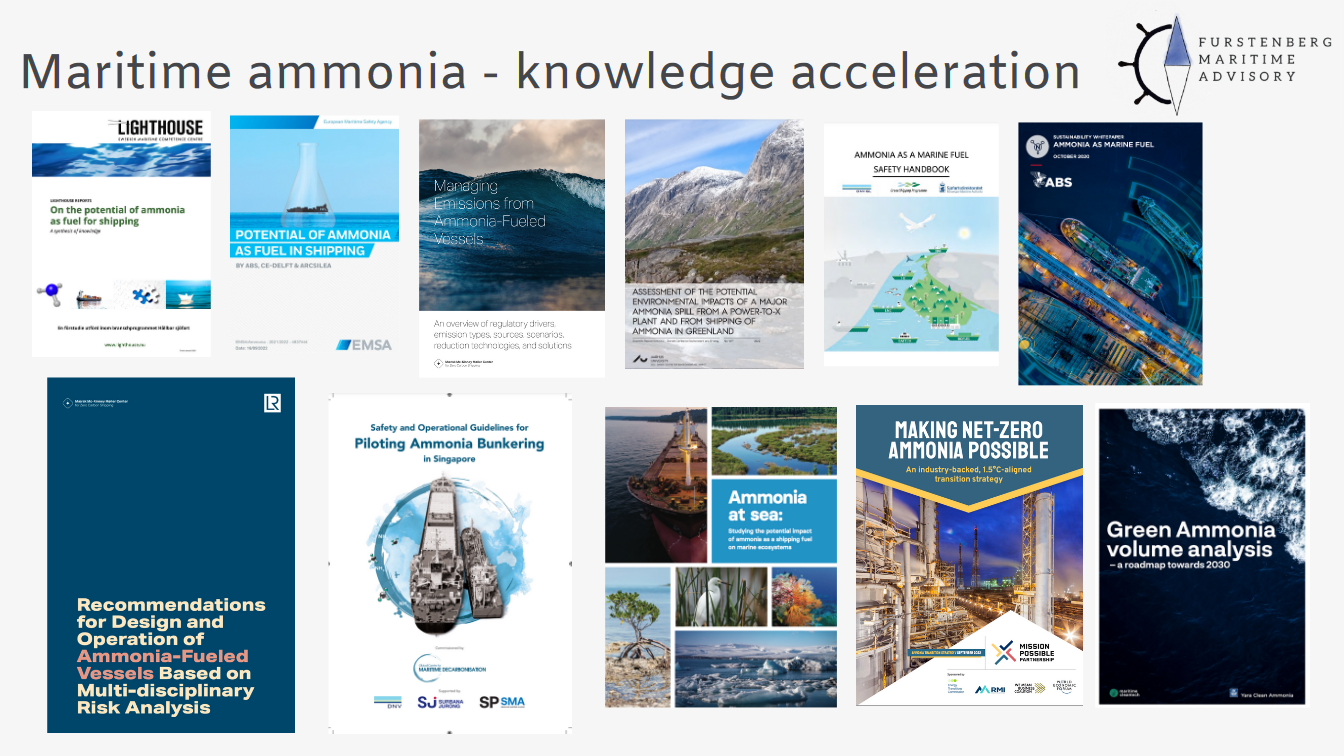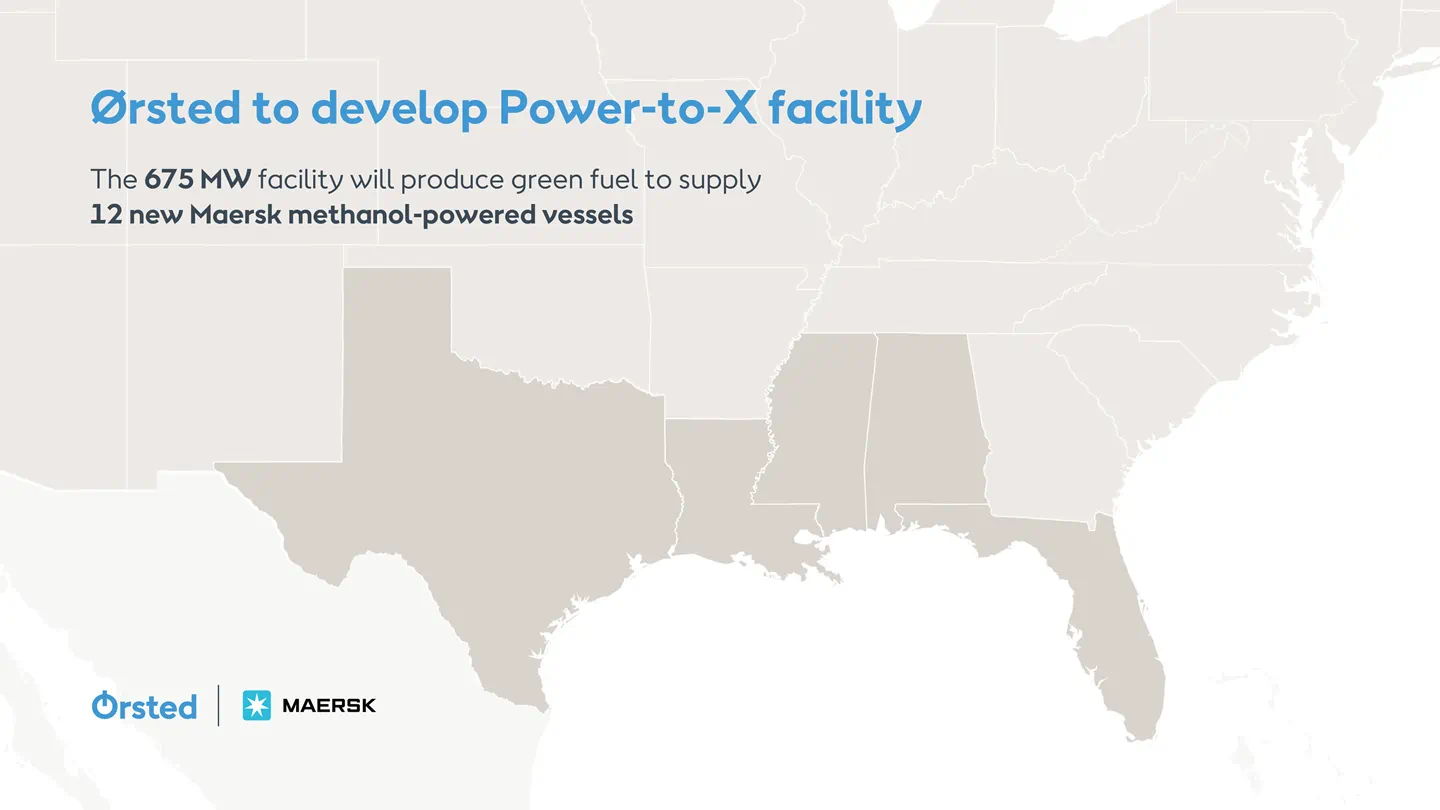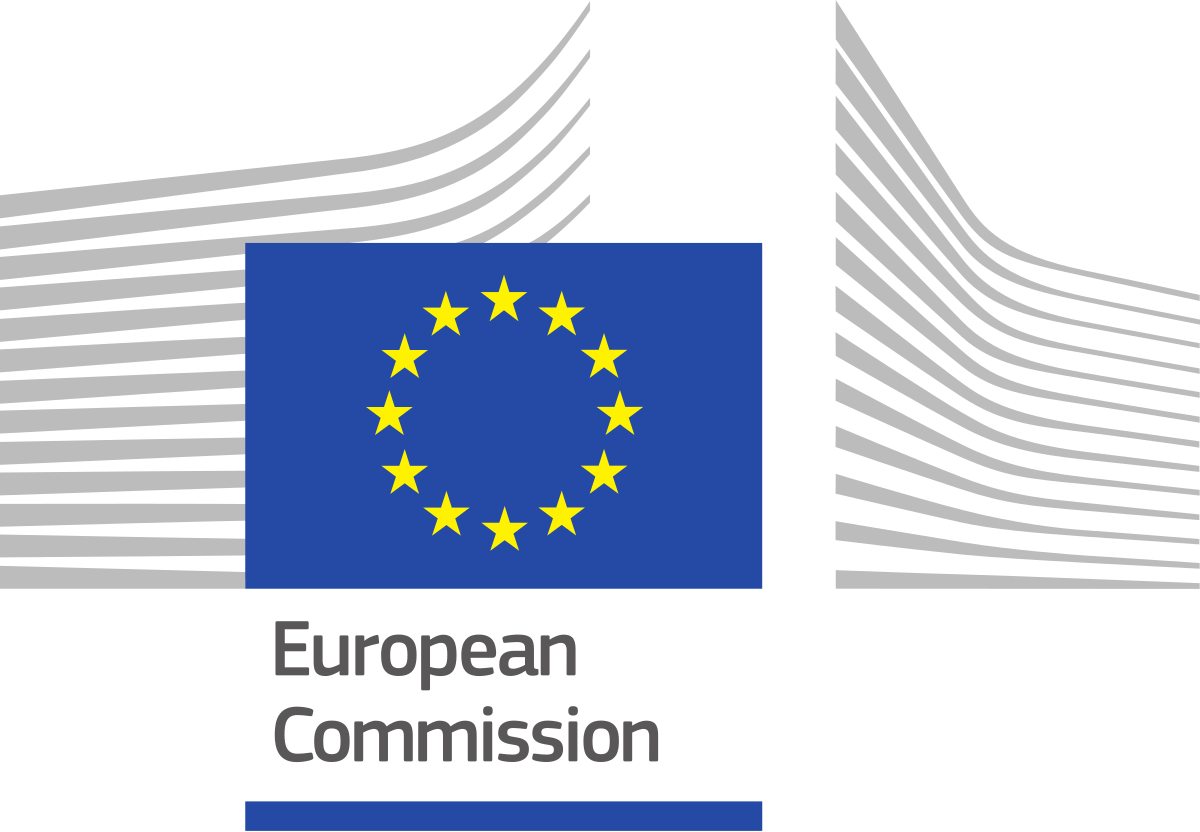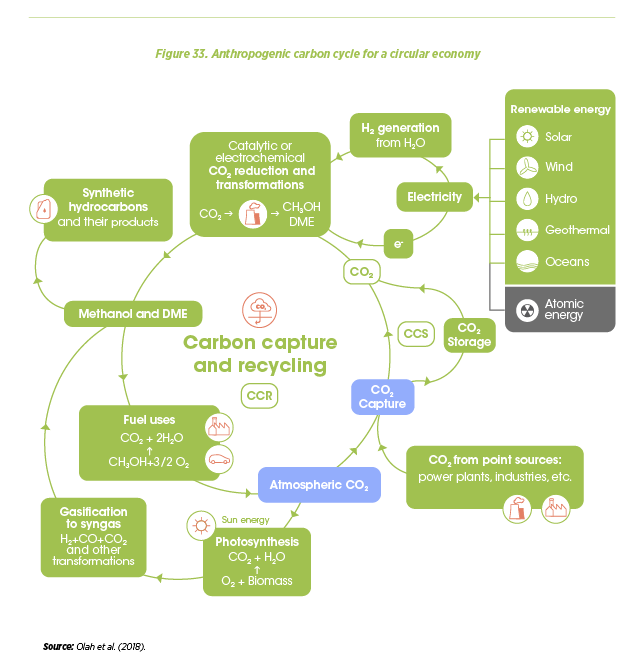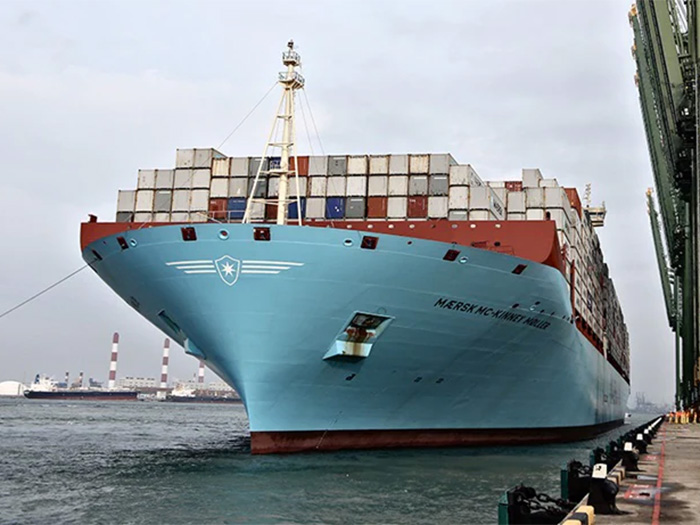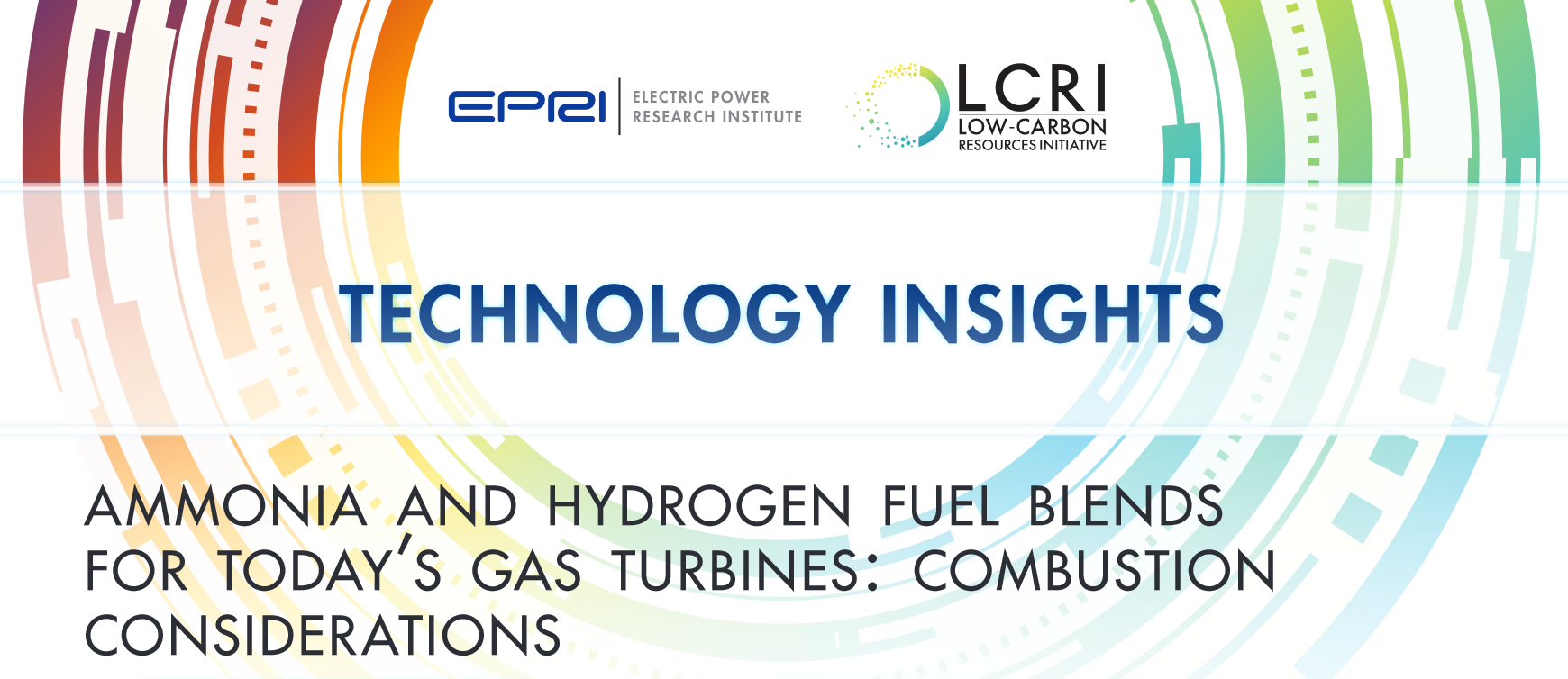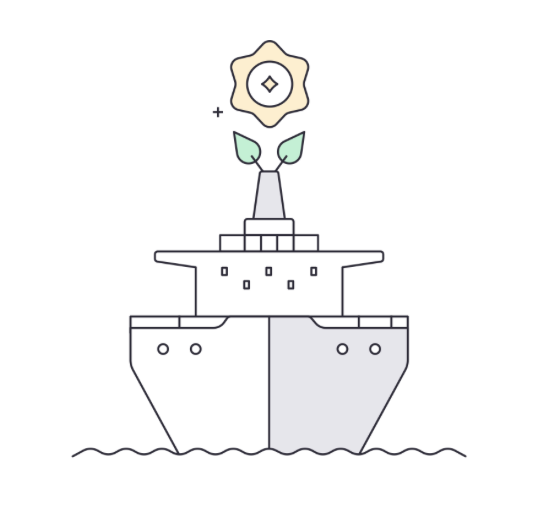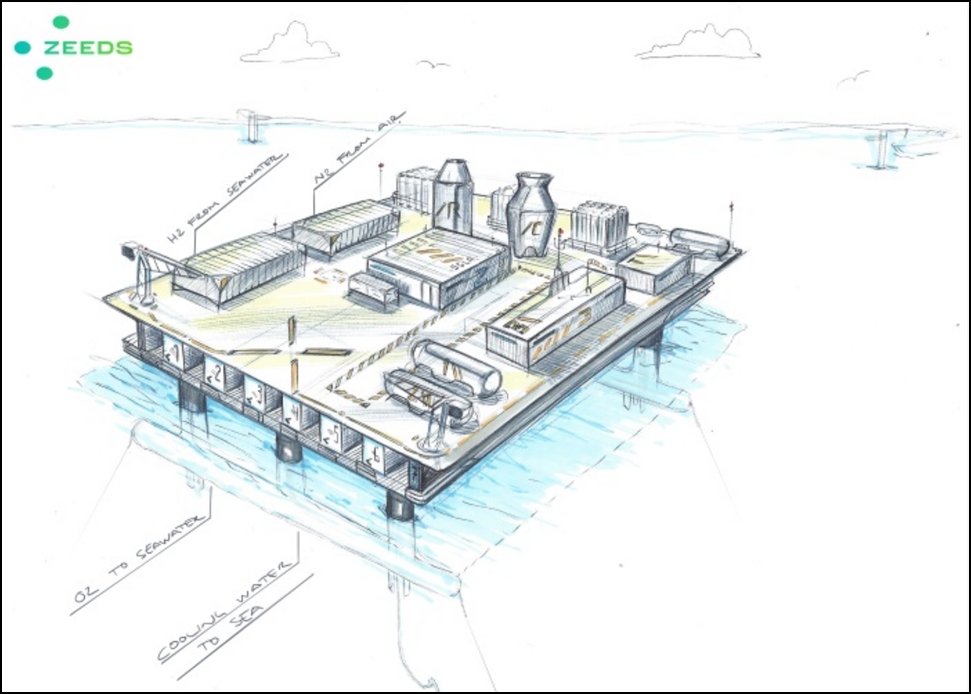TotalEnergies, Eren, CIP and A.P. Moller have launched a large-scale renewable energy project which will feature solar-powered electrolytic hydrogen and ammonia production in the Guelmim-Oued Noun region near the Atlantic coast in Morocco. State-owned fertiliser giant OCP Group has also signed agreements with Engie, Bpifrance and the French Development Agency to develop renewable projects and sustainable agriculture in Morocco.
Content Related to Maersk
Updates from Morocco: renewable ammonia value chain expansion
Consortium aims for ammonia bunkering on US east coast by 2030
The American Bureau of Shipping has awarded AiP to a new ammonia bunkering articulated tug-barge design. The bunker barge will be compatible with several ammonia-powered vessels under development, and will begin commercial operations on the US east coast by 2030.
Lloyd’s Register: vessel AiP and development updates
Several ammonia-centric vessel designs were granted AiP at the recent Posidonia shipping exhibition in Greece. Lloyd’s Register approved designs including the world’s largest Very Large Ammonia Carrier, a container vessel and a gas carrier propelled by Amogy’s ammonia-to-power technology, a NOX-compliant container vessel featuring a MAN ammonia engine, and an ammonia-powered Very Large Ore Carrier. Lloyd’s Register also recently approved H2SITE’s onboard ammonia cracking technology.
All hands to the pump: every stakeholder needed to support marine ammonia fuel
For our final episode of Maritime Ammonia Insights, we asked our resident experts Sofia and Conor Fürstenberg Stott to provide their insights on the pathway forward for marine ammonia fuel. Discussion topics included challenges for overlaying alternative fuels onto the existing bunker industry, the importance of seafarers to the transition, and why we need to move beyond talking about competition between alternative fuel candidates.
Maersk Tankers adds very large ammonia carriers to its fleet
Maersk Tankers has ordered up to ten very large ammonia carriers (VLACs) from Hyundai Samho Heavy Industries (HHI). The Korean-built vessels will have a capacity of 93,000 m3, with Maersk to make a decision to install ammonia-capable engines based on “regulatory and customer” support.
Ammonia bunkering at the Port of Savannah
A high-profile consortium will conduct a joint study exploring ammonia bunkering at the Port of Savannah in Georgia, USA. The consortium aims to establish a comprehensive supply chain to allow ship-to-ship ammonia bunkering in Savannah, and the study scope includes design of an Ammonia Bunkering Articulated Tug-Barge (AB-ATB) vessel.
First Approval in Principle for Project Sabre in Singapore
ABS has granted Approval in Principle to Keppel Offshore & Marine for an ammonia-fueled, ammonia bunkering vessel. The new vessel is a key component of Project Sabre: a high-profile consortium of maritime organisations aiming to commence ammonia bunkering in Singapore by 2030.
Green maritime fuels next to the Suez Canal
A series of new announcements illustrates the growing importance of Egypt, the Suez Gulf and the area designated the Suez Canal Economic Zone to the ammonia energy transition:
- Masdar and a series of public & private partners plan a 4 GW electrolyser capacity, 2.3 million tonnes per year renewable ammonia export project in Ain Sokhna, with the first stage to focus on methanol production for bunker fuel.
- The General Authority for Suez Canal Economic Zone (SCZONE) has signed deals for two smaller maritime fuel production plants, one with French organisation EDF Renewables and the other with UAE-based EMEA Power.
- And Maersk will explore potential for large-scale green maritime fuel production near the Suez Canal, committing to off take in a new deal with SCZONE and government partners.
Maersk secures its first complete e-fuel supply chain
A.P. Moller - Maersk has entered into strategic partnerships with six organisations to secure the supply of at least 730,000 tonnes per year of green methanol fuel by 2025, which will fuel their future fleet of twelve methanol-fueled container ships. The announcement demonstrates a path forward for ramping up supply of alternative maritime fuels (including ammonia) by having a shipowner commit to complete off-take from a wide variety of partners & production projects, each of which is dramatically scaling-up output levels this decade.
First Movers Coalition launches at COP26
Thirty-four leading global organisations, the World Economic Forum and the US Special Presidential Envoy for Climate John Kerry have founded a new group: the First Movers Coalition. The group's purpose is to invest in green technologies so they are available for massive scale-up by 2030, allowing for rapid decarbonisation of the hardest-to-abate industries. The implications for ammonia energy are huge, as many of the group's founding members are already deeply involved in the space.
Ammonia as a Fuel of the Future: A Ship Operator’s perspective
Fit for 55: Tax breaks, border tariffs, and Guarantees of Origin in the EU
Details of the Commission's comprehensive climate legislation package are now public. Relevant highlights include the inclusion of shipping into the EU ETS, a new tier system for fuel taxation and a carbon border adjustment mechanism. Also this week, Hydrogen Europe calls for an overhaul of the existing Guarantee of Origin (GO) system to address current shortcomings in clean hydrogen certification.
The Ammonia Wrap: world's largest ammonia manufacturing complex begins decarbonising, and a welcome boost for EU fertiliser producers
Welcome to the Ammonia Wrap: a summary of all the latest announcements, news items and publications about ammonia energy. This week: the world's largest ammonia manufacturing complex begins decarbonising, a call for green hydrogen projects in Chile, new maritime decarbonisation forecast from MAN ES, decarbonised shipping at the Biden climate summit and Fertilizers Europe welcomes the new Carbon Border Adjustment Mechanism.
The Ammonia Wrap: World Bank boosts hydrogen and ammonia as future fuels, new coalition for bunker ammonia, and cracking at the Wilhelmshaven hydrogen hub
Welcome to the Ammonia Wrap: a summary of all the latest announcements, news items and publications about ammonia energy. This week: the World Bank sees hydrogen and ammonia as key to decarbonising shipping, a new coalition for safe ammonia bunkering, Trafigura co-sponsors MAN's development of ammonia-fueled maritime engines, cracking plant a feature of the new Wilhelmshaven hydrogen hub, RWE and H2U to develop global hydrogen trading between Australia and Germany, Province Resources' West Australian mega-project grows to 8GW and South Africa's Hydrogen Society Roadmap a step closer.
The Korean New Deal and ammonia energy
South Korea has featured in many Ammonia Energy news updates, but often in a scatter gun fashion that lacked the momentum of ammonia energy announcements coming from the other side of the Korea Strait. Now, South Korea is ready to step out from Japan’s shadow as a clean energy innovator and deployer in its own right. We’re seeing the beginnings of a well-articulated strategy to achieve society-wide decarbonisation in South Korea, with a starring role for clean hydrogen and clean ammonia.
The Emerging Ammonia-Methanol Dialectic
Based on recent press reports, ammonia has a new friend: methanol. With the two upstart fuels being mentioned together with increasing frequency, they seem poised to develop on parallel paths as each seeks market applications where it can become a mainstay solution.
The Ammonia Wrap: Japan developments, ammonia from wastewater, Fortescue's new carbon-neutral goal, project updates from Australia and H2Pro
Welcome to the Ammonia Wrap: a summary of all the latest announcements, news items and publications about ammonia energy. This week: new Japanese developments, new AiP for ammonia-fueled vessel, Singapore bunkering study, new ammonia from wastewater initiative, Fortescue brings carbon neutrality goals forward to 2030, Australian project updates for Hazer and H2U, and H2Pro updates from Israel.
Singapore Emerges as a Maritime Ammonia Center
Two recent announcements show Singapore emerging as a center for development of ammonia as a maritime fuel. In both cases, multi-party coalitions, with Singaporean connections, are focusing on ground-breaking work.
The Ammonia Wrap: EU ambitions, new tankers, and GW scale green ammonia in Denmark, Norway, and Chile
Welcome to the Ammonia Wrap: a summary of all the latest announcements, news items and publications about ammonia energy. In this week's wrap: HyDeal Ambition, new marine tankers, fuel forecasts & SOFC developments, a new technical briefing on power generation, UNSW leads research in P2X, GWs of green ammonia in Denmark, Norway and Chile, green ammonia in the Orkneys, new government focus on ammonia in South Africa, and India to make green ammonia production mandatory?
Maersk and partners launch Center for Zero Carbon Shipping
This morning, the Mærsk Mc-Kinney Møller Center for Zero Carbon Shipping was announced. Launched with a “start-up donation” of DKK 400 million (USD 60 million) from the A.P. Møller Foundation, this new research institute intends “to develop new fuel types and technologies,” to decarbonize the maritime sector. Behind the Center for Zero Carbon Shipping is a significant industrial consortium with seven founding members (actively seeking additional partners): ABS, A.P. Moller – Maersk, Cargill, MAN Energy Solutions, Mitsubishi Heavy Industries, NYK Lines, and Siemens Energy.
The maritime sector's ammonia learning curve: moving from scenario analysis to product development
ANNUAL REVIEW 2019: The maritime industry is learning about ammonia fast. It is searching for a new bunker fuel, and ammonia is one of the few options that can realistically deliver a 50% reduction in the sector's GHG emissions by 2050. The IMO declared this target in April 2018 and, in last year's Annual Review, I wrote about all the reports that were published demonstrating that ammonia could deliver this outcome. In the last 12 months, by contrast, we have moved quickly beyond analysis and into engineering design, technology testing, and product development.



